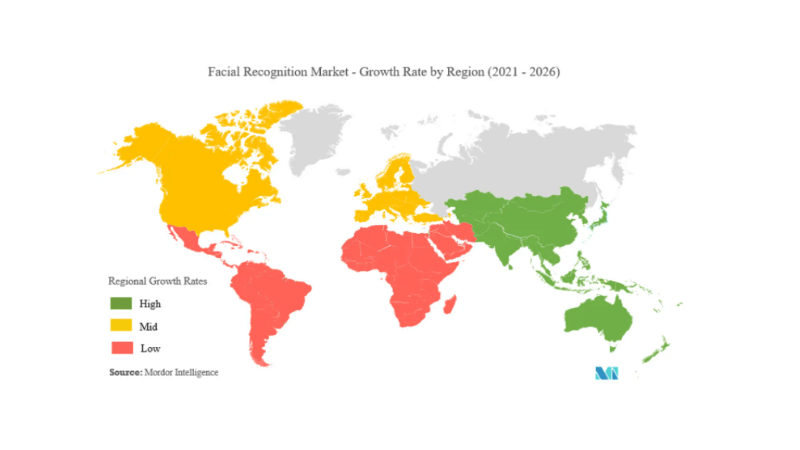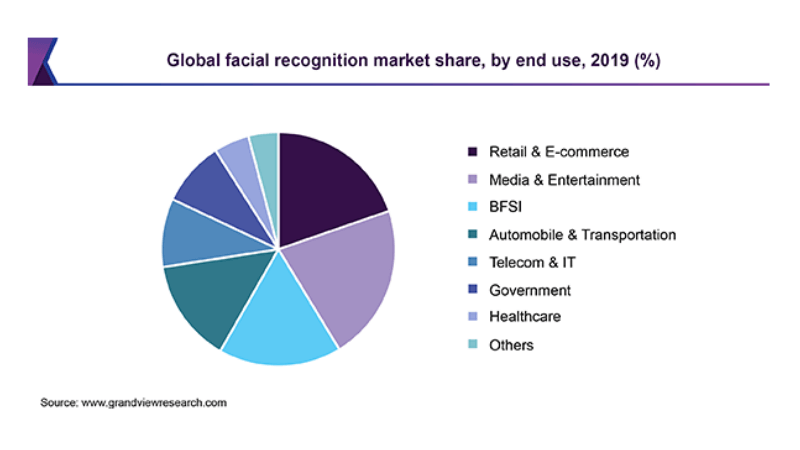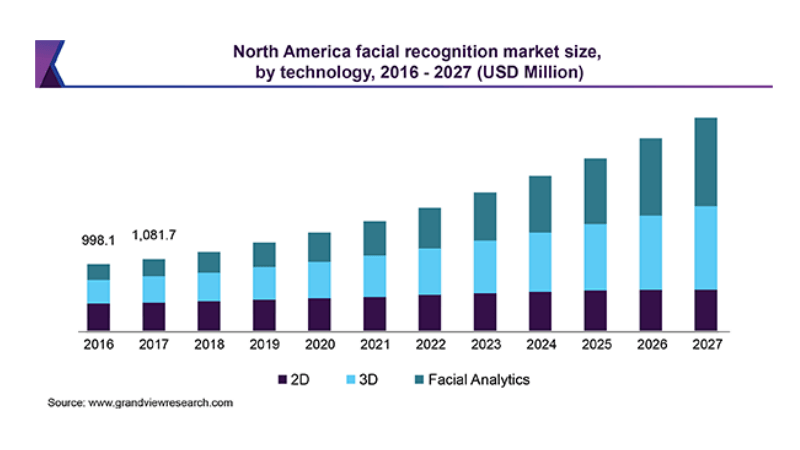Facial recognition generation has grown rapidly during the last decade, and it could be difficult to keep up with all the developments. The development in three technical fields, like Neural Network, Big Data, and Graphical Processing Unit (GPU) has played a considerable role in the widespread use of Facial Recognition Technology in various sectors.
What is facial recognition
Facial recognition is a way to identify or confirm an individual’s identity through technology by using their face. It compares the information with a database of known faces to find a match. Facial recognition systems can be used to identify people in photos, videos, or in real-time. It is one of the most powerful surveillance tools ever made.
Facial recognition can be used to verify a person’s identity by recording and analyzing a photo or video of a person’s facial structure and comparing it towards a pre-current photo to decide whether or not there’s a match.

How does facial recognition work?
Face recognition systems use computer algorithms to choose out specific, distinctive details about a person’s face. This information, for example the distance between the eyes or the form of the chin, are then transformed right into a mathematical representation and compared to data on different faces accumulated in a face recognition database. The data about a specific face is frequently known as a face template and is distinct from a photograph due to the fact that it’s designed to only include certain details that may be used to differentiate one face from another.
Facial recognition algorithms use biometrics to map out facial features from a photo or a capture from a video. That information is compared to a database of faces.
There are four general steps in the process: face detection, face analysis, converting an image into data, and matching.
1. Face detection
This is the process of finding a face in an image. In this phase, the focus is on finding a face, not the identity behind it. The camera will detect and recognize a face, either alone or in a crowd.
2. Face analysis
In this phase a photo of the face is captured and analyzed. The software identifies facial landmarks during the analysis. The facial landmarks are also called nodal points. Key factors include the distance between eyes and the distance from forehead to chin. The arrangement of nodal points is unique to the individual, and the face recognition technology will analyze each one of them. The result of face analysis is called a facial signature.
3. Converting an image into data
Each nodal point becomes a number in the application database after the analysis. The resulting numerical code is called a faceprint. Each person has their own faceprint.
4. Matching
Matching is the final step of the process is finding a match. The faceprint is then compared against a database of other faceprints. This database has photos with identification that can be compared. The facial recognition technology identifies a match for exact facial features and returns the user with the found match.
Some benefits of using facial recognition
- Strengthening of security measures (for example, airports use facial recognition to identify criminals and potential threats to passengers);
- Help find missing people (in this case, one of the uses of facial recognition is to predict how a person can look several years later);
- Faster processing to ensure quick verification of a person (non-invasive identity verification);
- Automation of identification (it eliminates manual identification and increases the accuracy of this process);
- Fraud reduction;
- Detection of genetic conditions.
Trends
According to an article published by Mordor Intelligence, the Facial Recognition Market was valued at USD 3.72 billion in 2020, and is projected to be valued at USD 11.62 billion by 2026, registering a compound annual growth rate of approximately 21.71% over the forecast period (2021 – 2026). Also, China is one of the major consumers and exporters of the facial recognition technology, because the law and enforcement, together with various government bodies in the country, adopted surveillance technologies. Currently, the country has the most extensive public surveillance system. According to Comparitech, in China, the number of CCTV cameras ranges from 200 million to 626 million by 2020.

With the COVID-19 pandemic, facial recognition technology also got used more and more in virtual healthcare and disease outbreak prevention by combining it with different types of biometrics and in applications, starting from identifying people with protective headgear to applications including, for instance, temperature detection.

Another market that’s developing is that of facial recognition software solutions. However, it’s clear that growth won’t be the identical globally and the providers will range too. Even with COVID-19 driving the market, facial recognition is perceived in different ways around the globe.

According to a report published on Cision PR Newswire, 3D facial recognition is expected to hold a higher market share because of the increasing adoption of it in surveillance and smartphones. 2D facial recognition calculates face geometry in 3D with the help of invisible light of an infrared camera, and delivers an optimal user experience that combines convenience, reliability, and comprehensive security. At the moment, around 94% of smartphones feature fingerprint sensors, but this is expected to drop to 90% by 2023, because technologies such as 3D facial recognition are becoming a standard approach to user authentication. Also, the accuracy offered by 3D facial recognition is witnessing increasing adoption in applications that are critical and operate oversensitive data.
The future involves facial recognition. With the evolution of this technology and its spread in society, such systems will become a common aspect of everyday life.
